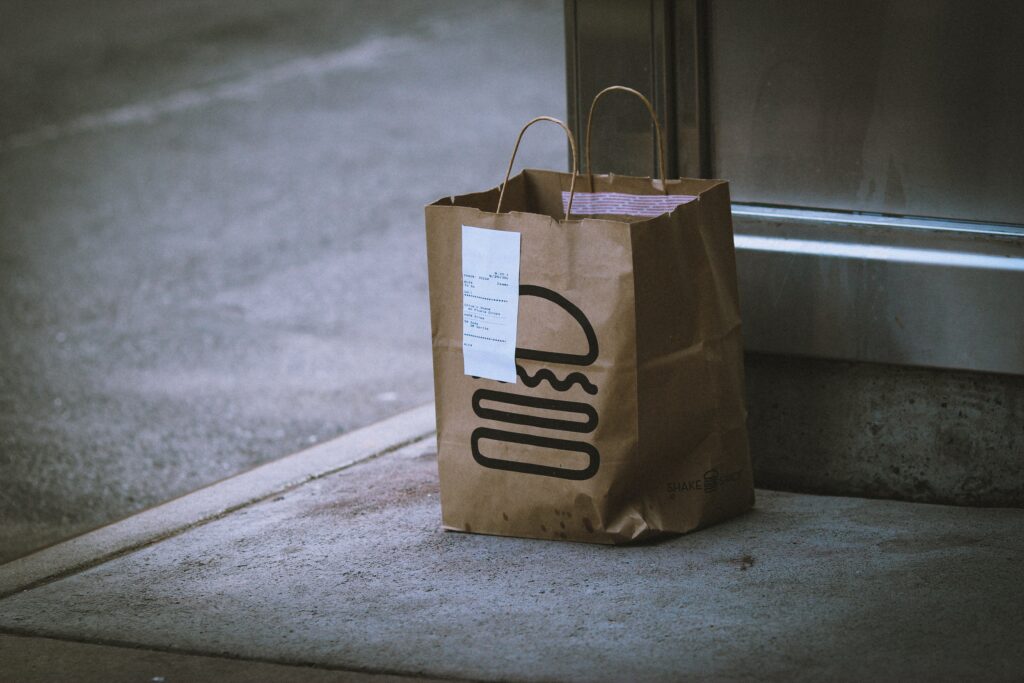Finding IP Value
DoorDash Patent Shows Some Patents Are Granted for Incremental Advances

incremental: increasing in a small series of steps
Our patent laws protect innovations and investments by rewarding the person or company who advances technology in a distinct way. Some patented inventions are groundbreaking, such as one of the first patents for GPS technology (U.S. Pat. 3,789,409) issued in 1974. Conversely, other patents mainly build on prior foundations, sometimes only incrementally. In many cases, this occurs by combining already-known technical capabilities in unique ways.
Consider a 2020 patent granted to DoorDash, Inc. (U.S. Pat. No. 10,740,715) titled “Adaptive Combined Order Management.” This patent purports to achieve efficiency in the food delivery business by, among other methods, combining the orders from two or more people based on their proximity, which may use GPS tracking. In one sense, forty-six years after a groundbreaking patent, DoorDash patented a GPS-based take on the notion of “two birds, one stone.”
DoorDash’s path through the Patent Office also sheds light on the patenting process generally. When it filed the application, DoorDash sought a patent with very broad claims to its invention. An exemplary claim in the application had three main criteria: (1) a computing device receiving an order from a first user device with a selected item, (2) a computing device receiving an order from a second user device with a selected item, and (3) processing the orders into a single combined order. At the outset, one ground for rejection was that combining these steps using a computer was obvious compared to all the prior art preceding this patent application.
In addition, the patent examiner also rejected claims under the “abstract idea” principle. In one aspect, this means that programming a computer to perform tasks that a human could perform, even if it took longer, generally is not eligible subject matter for a patent without something more. More formally, the principle refers to integrating the elements in a claim into a practical application. An example of “something more” is when a particular patent claim, taken in its entirety, enhances the functioning of a computer, or produces an improvement within a given technical field. The core idea is that one does not patent a basic concept, such as delivery from a restaurant to a home, but instead the unique arrangements of technology governing how the intended result is achieved.
Responding to the rejections, DoorDash amended the claims on two separate occasions, each time adding more criteria (i.e., elements) to its claimed invention. Examples of the added elements included steps of determining a location of the first user device, determining if a second user device is within a threshold distance of the first, and sending information about the combined order to the second user device. By adding these and other elements to the claims, DoorDash defined the scope of its invention more narrowly.
Also, DoorDash argued on multiple occasions that, among other features, the step of sending information about the combined order to the second user device provided a meaningful limitation on the scope of the claimed invention. DoorDash argued that this feature was narrowing and represented an inventive concept that provided “something more” than an abstract idea.
Ultimately, DoorDash’s patent was granted. It also is worth noting, however, that DoorDash’s strategy to narrow its claims will make it harder for DoorDash to prove infringement by its competitors. To use an analogy, DoorDash wanted a very wide net, with potential to catch many fish, but it accepted a much smaller net due to amendments.
As a result of the narrowed claims, to establish infringement, DoorDash would have to prove that every element in one of the claims is being practiced. One of the terms mentioned above recites “sending the information related to creation of the combined order to the second user device.” Though appearing in all of the claims, the italicized phrase is not in the descriptions and teachings of the patent itself. This term could raise interesting issues for both infringement and validity of the patent, such as how much information is needed to qualify as “information related to creation of the combined order?” Would the name of a merchant on the first order suffice? Would it require information like the exact order made by the first user, or the distance the courier has to travel? In short, how much information “related to creation” is intended by this claim language, as the second user decides whether to accept participating in a combined order? These and other questions will likely have to be answered in any future patent litigation that might occur.
The DoorDash patent illustrates that, five decades after groundbreaking, incremental advances that use GPS technology are still being patented. Here, a patent for food delivery helps demonstrate a tension between competing interests: incentivizing technology investments by rewarding the innovator, versus avoiding unnecessary stifling of competition if patents that are too weak or overly broad were to be allowed. DoorDash worked within our patent system by amending its claims, and it now owns a patent that describes the older GPS technology. While the patent examiner agreed to allow DoorDash’s patent with the narrower claims, time will tell how strong of a patent it actually is.
This post is part of a series with two other posts involving similar cases. The series culminated in a short “practical lessons” post, which can be accessed here.
1. MPEP (Manual of Patent Examining Procedure) § 2106.04(d).
2. See Applicant’s Responses of August 29, 2019 at pp. 16, 18-19, and February 10, 2020 at pp. 14, 18.
3. See U.S. Pat. 10,740,715 at col. 28, lines 65-67 (italics added).
4. See U.S. Pat. 10,740,715 at col. 10, lines 23-39.
